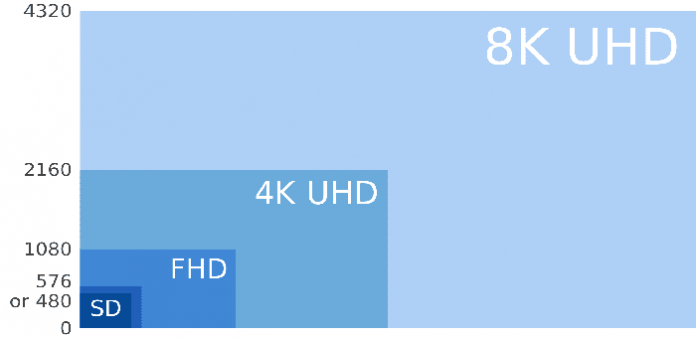VESA’s new Embedded DisplayPort (eDP) 1.4a standard display will reach PCs and mobile devices by 2016.
The Video Electronics Standards Association (VESA) has approved a new Embedded DisplayPort (eDP) 1.4a standard that will support 8K resolution screens. Now all computers and mobile devices, including laptops, will start supporting the higher resolution and commercial production should commence at the end of 2015.
The new eDP 1.4a standard will replace the 1.4 standard that was released in early 2013. eDP 1.4a enables a “higher video data transfer rate for increased panel resolution, greater color depth and higher refresh rates.”
The new technology is well equipped with 8K feature which one day or other will be pushed into the world of laptops, all-in-one PCs and even in mobile devices.
8K displays will support a resolution of 7680 X 4320 pixels. This feature is achieved by compressing the video feed to squeeze more data. It will also divide displays in two or four segments so the whole setup can handle all the extra pixels being thrown in.
The technology has proved to improve battery life, reduce display circuitry and improve the processing of pixels for laptops and tablets.
8K panel has much more capacity than a high-end laptop, a business mobile workstation, or a portable gaming rig. More pixels will make images and videos that are optimized for the resolution look crisper, and the better colour depth and higher refresh rates will bring more vibrant, lifelike imagery to your screen. The new technology will help graphic processor to refresh pixels only in some parts of the screen rather than the whole display monitor, which is yet another advantage.
Tablets and smartphones with 4K are yet to go mainstream. Panasonic has been offering a 4K tablet with a massive 20-inch tablet sustained by an Intel Core i5 processor clocked at 1.9GHz, but apart from that we can’t say 4K devices have been flooding the market.
But the moot question is, is there any need of 4K or 8K displays? Since it’s pretty hard for the human eye to differentiate pixels on a small screen? On top of that, an 8K panel might prove to be quite expensive for a device maker to embed into a device. 4K or 8K may make sense to certain sections of media industry and ads guys but will it make any sense to the street alecs?
Resource : Display Port.
